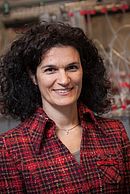Please type a search term (at least two characters)
News
How to prepare our energy gas infrastructure for renewable gases

Introducing the European Metrology Network for Energy Gases
For countries all around the world, there is an approaching problem that also connects each country together: The gas grid was originally made purely for conventional gases (i.e. natural gas). As a result, the rise of renewable energy poses a challenge - as mixed gases form an increasing proportion of what enters the grid. This, of course, will impact how new grids should be built as well as the suitability of current systems. Annarita Baldan, chair of the European Metrology Network (EMN) for Energy Gases explains, “Take biomethane, which can contain some acids, like hydrogen fluoride or siloxanes. These biomethane impurities could damage the network. On the other hand, if you want to mix hydrogen with other gases there are even more safety issues.” As it is imperative that any type of gas is stored and delivered safely, new gases which enter the system will need to comply with a lot of specifications, including ensuring that the materials which convey the gas are not damaged.
These are issues which concern not only one individual country, a single technology, or even one scientific discipline. According to Annarita, “People with different expertise in flow, humidity, composition of gases, temperature and material testing have to come together. That’s why we have started the European Metrology Network for Energy Gases, to make sure that together we can address the challenge as fully as possible.” By being part of this new connected structure, metrologists will be able to be more efficient and avoid performing redundant research.

An effective metrological infrastructure will also help to ensure better quality control of gases, and that the trade of gases is reliable, so that citizens pay a fair price for what they are using. To facilitate this, the EMN will position itself as the metrological centre for energy gases in Europe, providing knowledge and expertise. “We noticed that individual metrology institutes cannot offer all the required measurement services. Think of a big hydrogen producer - they need calibration for lots of different properties, which won’t be available at one single institute.” says Annarita. However, the EMN will be able to match stakeholders and their needs to participating institutes who offer the relevant measurement services.
Prior to the network starting, the metrology community already gained a lot of experience in this area. Annarita explains that they have done many years of research in EURAMET’s European Metrology Research Programmes (EMRP and EMPIR), dealing with different types of energy gases, so that now they have a wealth of knowledge inside the EMN. “In the long term, we want to make sure that the outcomes of our research projects are going to be included in standardisation, and this is one way to help the uptake of our results. At the end of the day, stakeholders use research results when they become standardised methods.”
Want to hear more about EURAMET?
Sign up for EURAMET newsletters and other information
The videos regarding the metrology of appearance cover a variety of topics and will help increase photometry and radiometry expertise across National ... more
Graphene could revolutionise many technology sectors but needs standardisation more
Take part in EURAMET workshop and BIPM survey! more
CEN, CENELEC, EA, EURAMET, and WELMEC join forces to reinforce and promote the European Quality Infrastructure more
The sampler will allow for safer, more efficient and representative sampling to ensure biomass is suitable to be used as fuel more





